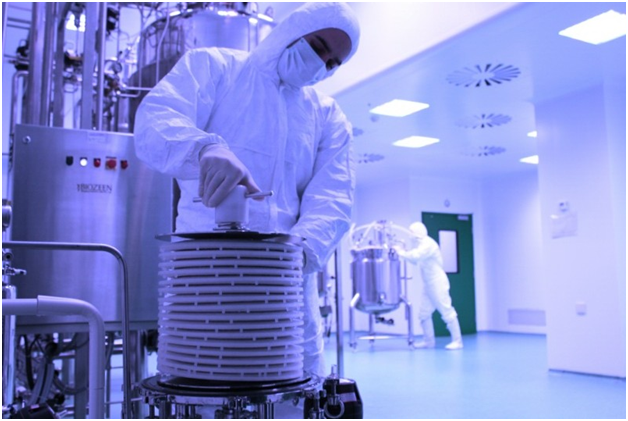Vacuum technology has been used for pneumatic conveying of powders and blends in the pharmaceutical industry for some time now. But how do manufacturers integrate pneumatic vacuum conveyors into new processes that involve continuous operation?

Pneumatic conveyors and refill processes
Much of the debate revolves around pneumatic receivers being used as refill devices, especially for loss-in-weight feeders (LIW) which are a key part of continuous operations. It’s essential that the device being used for refill is reliable and can maintain a constant flow of the ingredient to the process within a specific time frame.
The vacuum is used to pull the material into a receiver which is mounted above the LIW feeder. The receiver fills up to the specified level then waits for the feeder below it to ask for refill, at which point a discharge valve is opened and the contents of the receiver discharge into the feeder. The valve then closes and the cycle begins again so that the receiver is ready with material when the feeder asks for it. Pneumatic receivers operating in this way can provide continuous refill from many sources such as drums, bags or supersacks.
Accurate discharge valves are essential
However, the vacuum conveyor process does depend on the discharge valve situated on the pneumatic receiver having a very definite cut-off action. If the valve doesn’t cut off the supply cleanly, the refill will take longer. A leaking refill valve will cause weight fluctuation and result in a positive direction flow error. For this reason, butterfly valves are nearly always chosen in the pharmaceutical sector because they are easy to clean and are available for high containment processes. Another key to a successful continuous process is a design that is proven and installed by experts http://www.aptech.uk.com/pneumatic-conveying/vacuum-conveying/.

A useful source for information on the containment of dust in these processes, is the Handbook of Pneumatic Conveying (Mills et al, published by Marcel Dekker). It emphasises the importance of containment throughout the manufacturing operation.
Obviously, in pharmaceutical applications it is sometimes essential to engineer the conveying system in the plant that safely contains potent ingredients. The usual way of approaching this requirement is via the containment of dust on the pickup points, extra filters with the vacuum receiver and by using split butterfly valves on the discharge points for extra containment.